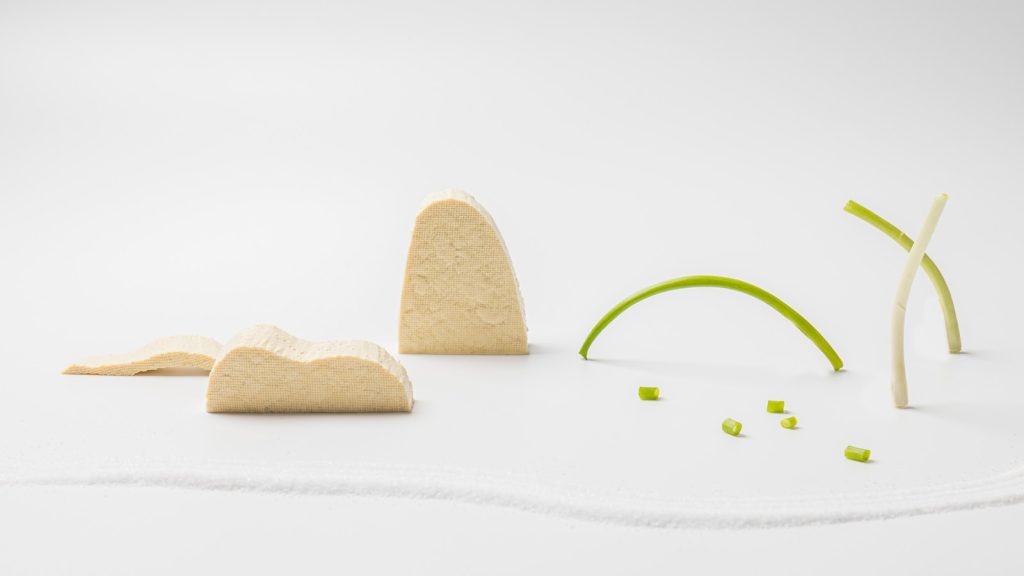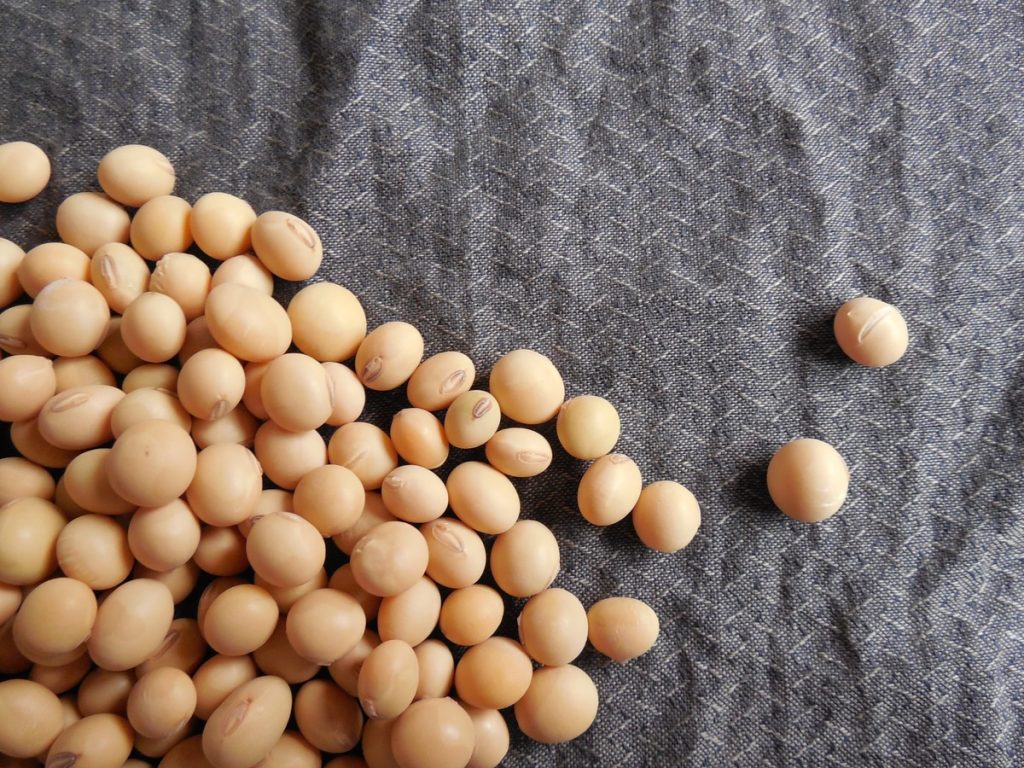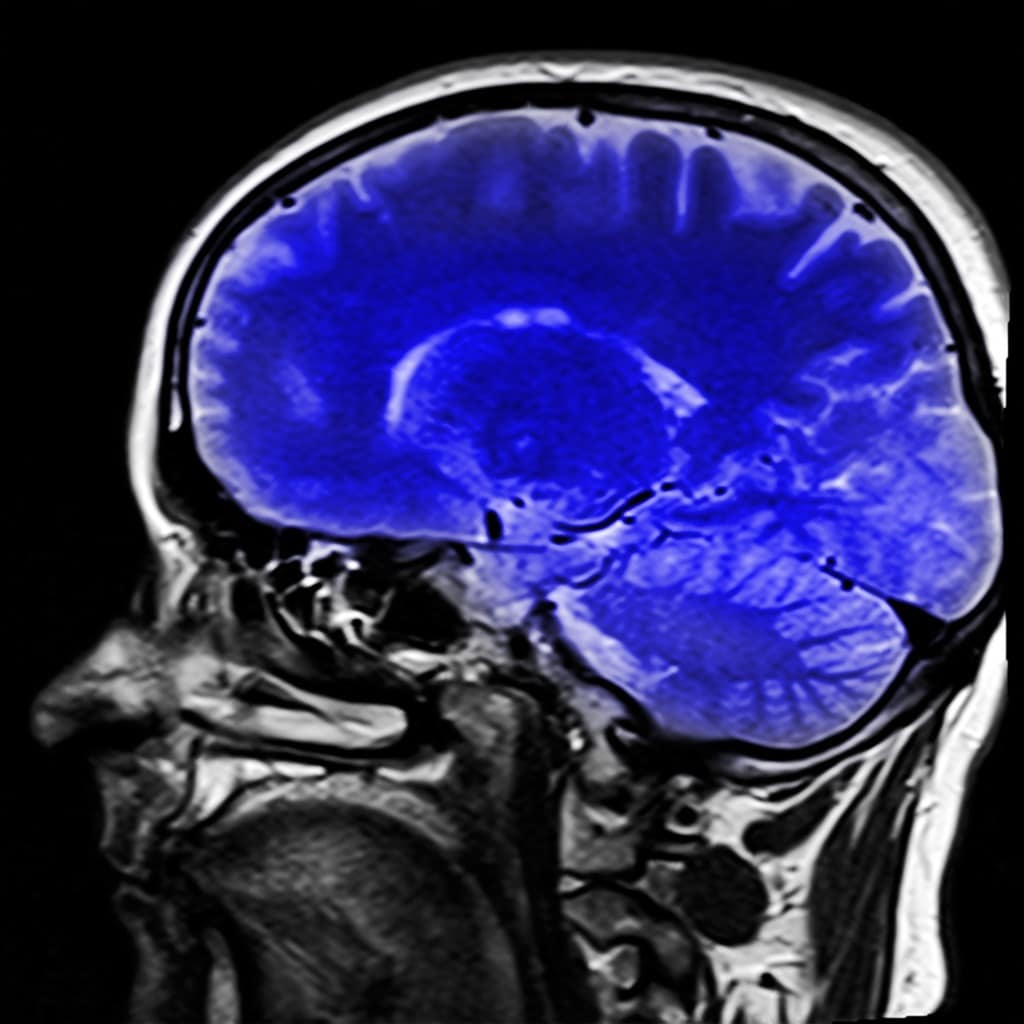[Article updated on 19/09/2023]
Derived from soy beans, soy lecithin is an ingredient that is frequently present in foods, medicines and dietary supplements. It contains various components characterized by properties which give lecithin medicinal and dietary virtues, with use in the pharmaceutical, agro-food and cosmetology fields. Beneficial for the body in more than one way, lecithin can also pose health risks.
What is soy lecithin?
The term lecithin comes from the Greek word “lekithos” which means egg yolk. Lecithin was first isolated from egg yolk in 1846 by Theodore Nicolas Gobley (1811-1876). It is a lipid substance that is found in egg yolk, but also in the brain. This substance is also present in foods of plant origin, notably peanut, sunflower and soybean vegetable oils.
Soy lecithin is therefore extracted from the oil from soy beans, a leguminous plant. This by-product of soybean oil is obtained from simple cold pressing and decanting of the soybean. The pressure of the seeds makes it possible to obtain a liquid which is a mixture of oil and lecithin, the decantation allows them to be separated.
Soy lecithin is, therefore, an oily substance (lipid in nature). It is an almost odorless viscous liquid with a yellow color. But, in addition to the liquid form, for various uses, it can be presented in several formats, notably in the form of powder, tablets, capsules. It is therefore possible to buy soy lecithin in these different forms. Soy lecithin is available in soy beans, but also commercially.

What is the composition of soy lecithin?
Essentially made up of substances involved in improving the functioning of the brain and the nutrition of brain cells, lecithin is rich in:
phospholipids
Phospholipids constitute a collection of fatty acids (palmitic and oleic acid), phosphates and glycerol. These lipid substances provide the body with polyunsaturated fatty acids which are essential nutrients. They integrate the composition of the nerve cells of the brain, they are major components of the membranes which make up all the cells of the brain. Basic constituents of cell membranes, phospholipids represent approximately a quarter of the weight of the brain, consequently playing a vital role in the memory process. They maintain the permeability and fluidity of cell membranes, while preserving their plasticity. They act on temporary memory problems.
choline
The main component of cell membranes, choline is used by cholinergic neurons to synthesize a brain neurotransmitter, notably acetylcholine, which is involved in the regulation of memory and the improvement of mood. This neurotransmitter is also essential in the transmission of nervous messages.
Choline is involved in the proper functioning of the nervous system, the heart and many other organs (the brain and the liver). By contributing to the proper functioning of the liver, choline participates in the elimination of toxic substances present there and in the detoxification of this organ. In addition, it lowers blood fat levels and intervenes in various processes in the body, in this case, DNA synthesis, transport and metabolism of lipids. It helps dissolve and to burn fat and cholesterol and can help regulate kidney, liver and gallbladder function.
inositol
A vital constituent of cell membranes, inositol plays a key role in the proper development and activity of cells. This molecule is involved in hepatic fat metabolism and the synthesis of neurotransmitters such as dopamine and norepinephrine. It increases good cholesterol, HDL, and helps reduce bad cholesterol, LDL.
Soy lecithin also contains vitamin E, a powerful antioxidant, protective against the harmful effects of free radicals which accelerate aging. It is a hypolipidemic agent which reduces the lipids circulating in the blood.

What are the properties of soy lecithin?
In the body, soy lecithin plays the role of a natural emulsifier. It dissolves fatty substances in the blood, in particular cholesterol. It moves cholesterol away from the arterial walls, thereby preventing the deposition of fatty substances on the arteries.
Soy lecithin has activities that help control blood cholesterol levels. With a hypoglycemic effect, it lowers your cholesterol and improves the ratio between good and bad cholesterol. Thus, it protects the body against hypercholesterolemia and cardiovascular complications. It proves beneficial for the cardiovascular system
Soy lecithin is an excellent antioxidant. It protects the cell membrane from oxidation caused by free radicals which can be harmful to blood vessels. With this antioxidant effect, it prevents free radicals from causing blood cell clumps. These agglutinations are likely to create a clot which blocks the blood vessels and causes a heart attack.
Soy lecithin is distinguished by phospholipid properties which help protect cells and tissues in which it improves oxygen transport. This protective effect at the cell level also improves their functioning.
Soy lecithin is characterized by excellent brain stimulation properties and an action on temporary memory disorders through its various components, in particular its high phospholipid content.
It provides us with important help against stress and fatigue, because soy lecithin has an essential effect on the membranes of nerve cells, especially during exam periods, for example. It provides the brain with all kinds of essential nutrients involved in good brain functioning. Ensuring, thus, a psycho-nervous balance for the brain.
What are the various uses of soy lecithin?
Soy lecithin is used as an additive in the food industry, particularly in processed foods in which it promotes the fixation of fats with water. Thus, it is used as an emulsifier in foods and preparations to maintain cohesion between water and fat. This stabilizing agent prevents them from mixing with other substances.
Thus, water or fats do not separate into foods thanks to the emulsifying action of soy lecithin. It includes, among others, margarine, chocolates and chocolate products, food products intended for babies, creams and ice creams. In chocolate, it will facilitate the fixation of milk and sugar to the chocolate butter. It makes it possible to bind foods or improve the homogeneity of ingredients, but it also extends the shelf life of products. As an emulsifying agent, it thickens a liquid, while giving it a pleasant texture.
In the pharmaceutical industry, lecithin is used for the development of medicines or food supplements due to the virtues that characterize it. It comes in various forms and can be used orally or topically.
In the cosmetic field, it is present in body milks, protective care for babies, foundations, creams.
Soy lecithin is used in gastronomy. In powder form, it is used to be sprinkled on dishes, cereals, cottage cheese, yogurt, soups, salads or mixed with dairy products, wet foods.

What are the benefits of soy lecithin?
On the brain
The brain is largely involved in the processes of memorization and learning, through neurotransmitters and connections between synapses. Soy lecithin is beneficial for the brain because it contains a substance, in this case, choline, which contributes to the synthesis of acetylcholine. This neurotransmitter plays an essential role in the transmission of nerve signals through neurons.
Consumption of soy lecithin can, thus, promote an increase in the quantity of acetylcholine in the brain, a continuous exchange of nerve impulses between the brain and the cells of the human body. Acetylcholine is involved in the ability to concentrate. This neurotransmitter is responsible for the storage and retrieval of memory and the efficiency of nerve signals in many regions of the brain.
Soy lecithin, involved in the synthesis of this neurotransmitter, will promote the improvement of memory retention capacity as well as learning capacity. In doing so, it improves nerve conduction, increases brain activity, including an improvement in well-being and brain health. Thus, it provides the brain with the nutrients it needs for proper functioning. It stimulates brain development and improves cognitive functions.
By improving memory, soy lecithin also helps prevent symptoms of dementia and can help people affected by neurological disorders or Alzheimer’s disease. Also, it provides protection against age-related memory problems.
Furthermore, soy lecithin, through components such as phospholipids and vitamin E, stimulates memory and is beneficial to students when preparing for exams.

On the cardiovascular system
Soy lecithin is characterized by beneficial effects on the cardiovascular system. It protects the heart and arteries and regulates blood cholesterol and triglyceride levels. The polyunsaturated fatty acids and linoleic acids it contains are fixed in the blood to eliminate bad cholesterol.
Indeed, soy lecithin facilitates the digestion of dietary fats, while facilitating their transport in the body, thus limiting the deposition of cholesterol in the arteries. Thus, it proves beneficial for heart health.
Heart pathologies are caused by an accumulation of fat deposits in the walls of the arteries which will then gradually harden. These fat deposits (mainly bad cholesterol) block the arteries and veins, causing the formation of plaques or a pathology affecting the arteries (atherosclerosis). Lecithin helps preserve the flexibility of the vascular walls and prevents atheroma deposits (fatty deposits rich in cholesterol) which cause atherosclerosis.
Also, the action of lecithin contributes to the normalization of blood cholesterol levels and the prevention of cardiovascular pathologies. It promotes the proper maintenance of cholesterol levels in the body, with a reduction in total cholesterol and “bad” cholesterol, LDL or Low Density Lipoprotein in English (low density lipoproteins) and an increase in “good” cholesterol. ” cholesterol, HDL or High Density Lipoprotein in English.
Soy lecithin is used to promote recovery after a stroke and in the treatment of cardiovascular pathologies.
For blood circulation
Soy lecithin improves blood circulation through its emulsifying action which eliminates cholesterol present in blood vessels. It rids you of any excess fats in the bloodstream by breaking down excess fats that accumulate in the body, including cholesterol and triglycerides. It melts these fatty substances and facilitates blood flow by preventing the formation of blood clots in the arteries, which helps prevent heart attacks, deterioration of blood vessels and pathologies of the circulatory system.
On the skin
Soy lecithin, available in a liquid formulation, is used in skin care products. It allows the ingredients of cosmetic products to be emulsified in order to improve their consistency, with a very silky feel and a formulation characterized by a fluid texture. Thus, topical application provides enormous benefits for skin health. You can use soy lecithin in other formats (granules, tablets, etc.) to improve skin health.
Soy lecithin softens the skin, making it smooth. It softens the skin through its emollient action. This component promotes skin hydration. It protects the skin and helps prevent dehydration. It is a powerful antioxidant that helps prevent the effects of free radicals on the skin.
Soy lecithin also helps reduce the visible signs of aging, marked by fine lines and wrinkles. Its vitamin E content promotes the renewal of dead skin cells and the formation of new cells in the skin. It slows down premature aging of the skin. In doing so, it allows you to have smooth, luminous skin, a radiant and younger face. The face is luminous and appears younger thanks to the stimulation of collagen that it promotes.

For the liver
Soy lecithin plays an important role in liver health. She :
- regulates fat metabolism in the liver;
- helps break down and emulsify fats;
- prevents excessive fat deposition in the liver;
- strengthens liver cells and makes cell membranes strong and particularly resistant to the infiltration of toxins capable of destroying liver cells.
Soy lecithin protects the liver against certain damage and pathologies, while preserving the health of this organ. It helps prevent liver cirrhosis by reducing inflammation of liver cells.
Also, it contributes to the proper functioning of the liver, while supporting liver functions.
Other benefits of soy lecithin
Soy lecithin:
- improves immune function by stimulating immunity, improving the activity of cells involved in the functioning of the immune system. These cells promote the elimination of toxins and foreign bodies which are likely to cause damage and pathologies;
- reduces the risks linked to the formation of gallstones and the appearance of gallbladder pathologies, by reducing the size of gallstones, while contributing to their dissolution;
- improves mood by hindering the action of the stress hormone cortisol. Also, it reduces the level of mental stress.
What are the risks associated with consuming soy lecithin?
The risks associated with GMO soy lecithin
All-natural soy lecithin, grown without genetically modified seeds, gluten-free and lactose-free, is a plant component that has enormous beneficial effects for the body. It is, therefore, non-toxic and safe for human consumption.
But, when it is extracted from GMO soy beans or exposed to pesticides, it is not without risks or more or less harmful effects.
Chemical treatment or the presence of pesticides, chemical solvents or herbicide residues may be harmful and may cause illness or hormonal disturbances. Soy lecithin can be toxic to the body, especially when it comes from genetically modified soybeans.
Lecithin extracted from these GMO soybeans can cause headaches, allergies, erectile dysfunction, dizziness. Thus, genetically modified lecithin may be unsuitable for consumption and harmful to health. It can cause poor insulin regulation, premature aging, and infertility problems.
To minimize these risks from genetically modified organisms, you should check labels and avoid lecithin extracted from GMO soybeans.

The risks associated with excessive consumption
Moderate consumption of soy lecithin is beneficial for the body and does not cause major physiological disorders. It does not constitute a health hazard when a small dose is consumed.
However, excessive consumption can cause damage to health. Lack of moderation in the consumption of soy lecithin is associated with various side effects.
Excessive consumption of soy lecithin or long-term overdoses may cause:
- Gastrointestinal disorders: consuming soy lecithin in large quantities can cause minor problems, including nausea, abdominal pain, abdominal cramps, abdominal heaviness, diarrhea and other digestive symptoms. and unpleasant intestinal.
- Hormonal disorders: soy lecithin can have harmful effects on the thyroid glands and the hormones they produce. It can also induce a drop in testosterone levels.
- A drop in blood pressure: in some people, excessive consumption of soy lecithin causes abnormally low blood pressure. Signs of this low blood pressure include syncope, increased breathing rate, headache, feeling tired, dizziness, confusion, vision problems and fainting.
The risks associated with an allergy to soy lecithin
Soy is an allergenic food. Thus, people allergic to soy may also be allergic to this soy by-product, in particular, soy lecithin. So, if you are allergic to soy lecithin, you may notice the appearance of certain symptoms after consuming certain products or food supplements that contain soy lecithin, even in small quantities.
These allergic reactions can manifest as skin reactions, hives, itching, digestive problems, respiratory problems. More serious allergic reactions requiring immediate medical attention may occur.
This exacerbated allergic reaction, called anaphylactic shock, is life-threatening. Its warning signs may include tingling, sneezing, excessive sweating, nausea, respiratory distress, and swelling of the face and lips. Edema can also affect the throat and larynx or even become widespread. Later, serious, potentially fatal allergic reactions occur, marked by tachycardia with a heart that begins to beat faster, skin pallor, sometimes with an asthma attack or difficult breathing marked by wheezing. The level of consciousness may be altered, with loss of consciousness, or even a coma.
The video summary:
